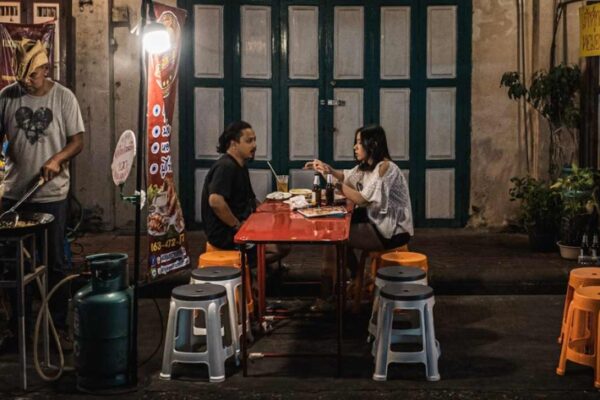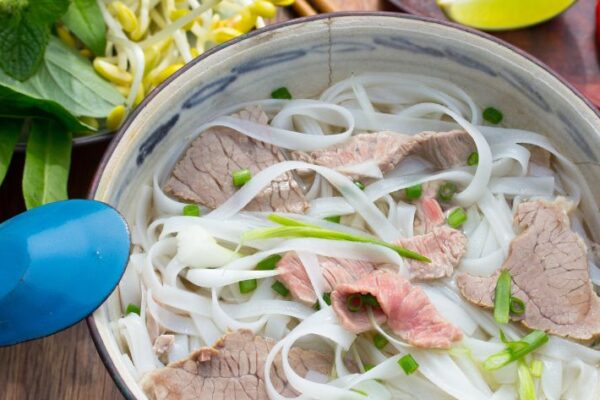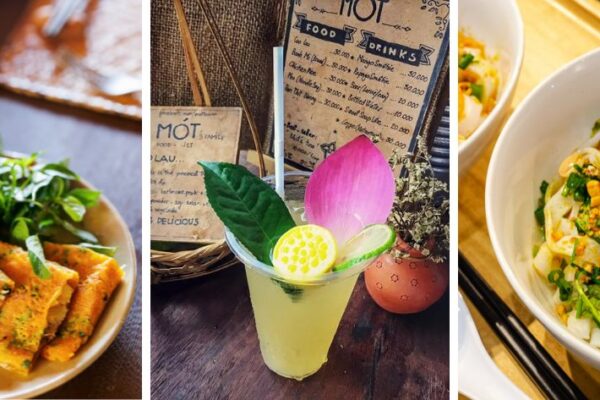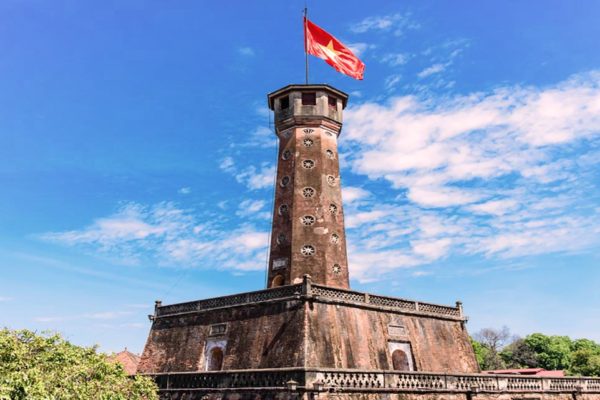Vietnam Food Tour: Comprehensive Guide to Culinary Delights
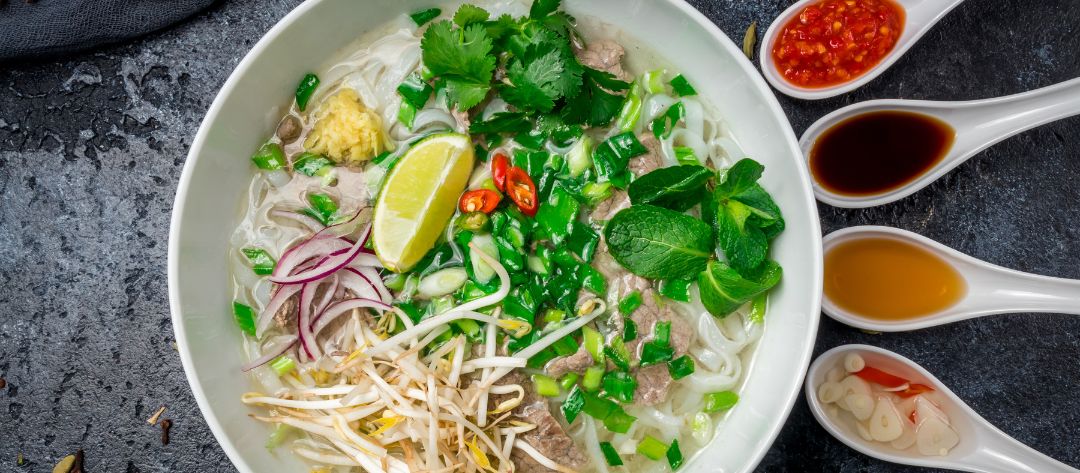
Vietnam’s diverse culinary landscape is a sensory delight, with the fragrant pho of the north and the sizzling banh mi of the south showcasing the country’s rich flavors and traditions. As you embark on a Vietnam food tour, get ready to savor a wide range of local specialties that will tantalize your taste buds and create memorable experiences.
This comprehensive guide aims to take you on a gastronomic journey through Vietnam, offering insights into its iconic dishes, the best itinerary, and food safety tips.
Some Features of Vietnamese Cuisine
The Availability of Superb Ingredients
One significant difference between Vietnamese cooking and that of other countries is the selection of ingredients. Vietnamese cuisine always uses the freshest ingredients, as they believe that this is the key to preserving the best flavors.
The country’s diverse and stunning landscape provides beautiful scenery and supports potential agriculture. The Mekong Delta, the Northern Delta, and the mountainous terraced fields with fertile conditions allow for a wide variety of vegetables, herbs, and fruits to be grown year-round. This, in turn, facilitates the production of meat from animals such as cows and pigs.
Additionally, the proximity to fresh water and the ocean gives Vietnam access to a wide variety of seafood. It is challenging to think of any ingredient that cannot be grown or sourced in Vietnam. Whether it’s herbs or meat, everything is available at excellent prices in local markets distributed throughout the country.

You might find various fresh ingredients in Vietnam
The Mastery of Vietnamese Culinary Techniques
From the steaming noodle soups to the sizzling street food, Vietnamese chefs and home cooks have perfected a range of cooking methods to coax out the most vibrant and nuanced flavors.
One of the foundational techniques is stir-frying. This quick, high-heat cooking method allows ingredients to retain their freshness and crunch while developing a delectable caramelized exterior. Another hallmark is steaming, which is often used for delicate seafood and vegetable preparations, preserving their natural flavors and tender textures.
Grilling is also prominent, adding a smoky depth of flavor to meats, fish, and even vegetables. The charred edges and juicy interiors of grilled dishes are a testament to the Vietnamese mastery of this technique.
Beyond these foundational methods, Vietnamese cuisine also excels at the art of pickling and fermenting. The tangy, crunchy pickled vegetables and the complex, umami-rich fish sauce are the products of these meticulous processes.
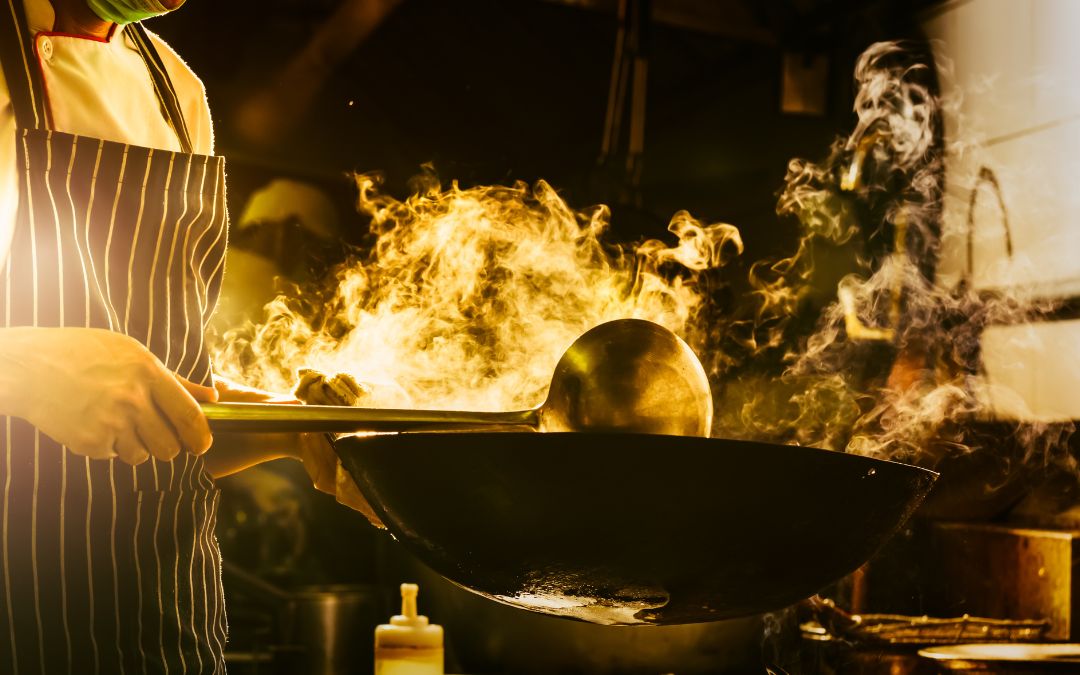
Stir-frying is quite popular in Vietnam
Must-try Local Specialties Should Be Included In Your Vietnam Food Tour
From the bustling streets of Hanoi to the serene landscapes of the Mekong Delta, the flavors of Vietnam are as varied as its geography. Let’s check out the gastronomic journey through the different regions of Vietnam, highlighting must-try local specialties that you cannot miss.
Northern Vietnam
Pho
- The best place to taste: Hanoi
Pho is arguably the most famous Vietnamese dish worldwide. This aromatic noodle soup, made with beef or chicken, is a staple in Hanoi. The broth is simmered for hours with bones, star anise, cinnamon, and other spices, resulting in a rich and flavorful soup.
Bun Cha
- The best place to taste: Hanoi
Bun Cha is another Hanoi specialty that you must try. This dish consists of grilled pork patties served with vermicelli noodles, fresh herbs, and a dipping sauce made from fish sauce, vinegar, sugar, and lime juice.
Thang Co
- The best place to taste: Sapa
Thang Co is a traditional dish of the Hmong people. It is a hearty stew made from horse meat, organs, and bones, cooked with a variety of herbs and spices. This dish is often enjoyed with corn wine.
Cha Muc
- The best place to taste: Ha Long City
Cha Muc, or squid cakes, are a specialty of Ha Long Bay. The squid is finely ground and mixed with spices before being shaped into patties and fried until crispy. These delicious cakes are often served with a side of sweet and sour dipping sauce.
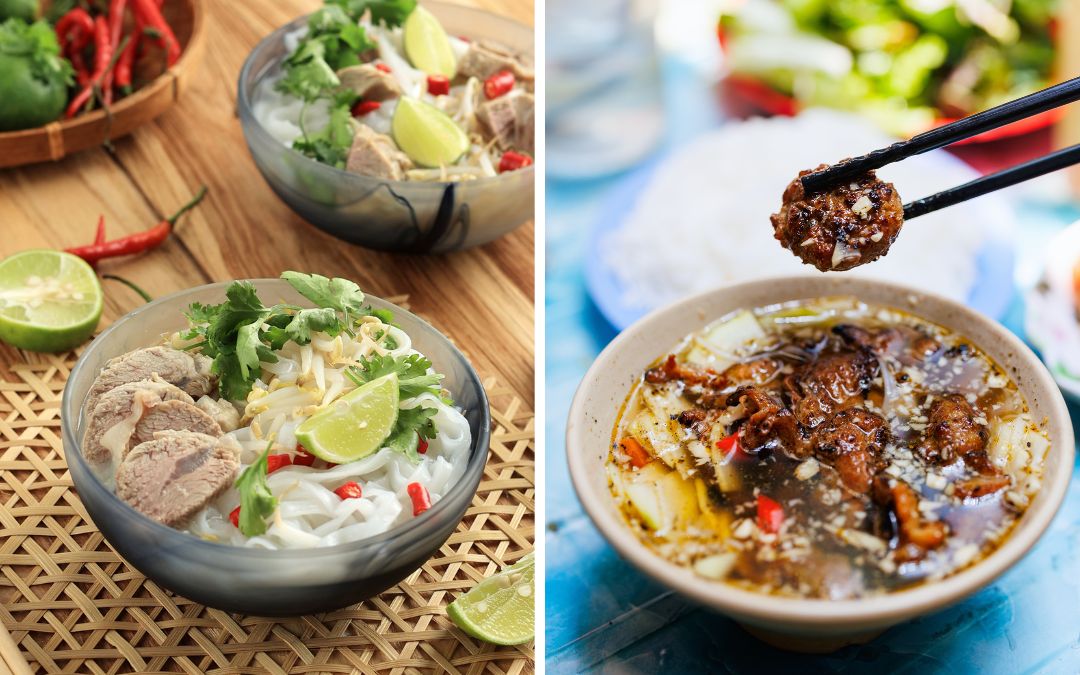
Pho and Bun Cha are the must-try dishes in Hanoi
>> Read More: Local Guide – 20 Famous Food In Hanoi That Every Visitor Should Try
Central Vietnam
Bun Bo Hue
- The best place to taste: Hue
Bun Bo Hue is a spicy beef noodle soup that is a must-try in Hue. The broth is made from beef bones, lemongrass, and chili, giving it a distinctive spicy and savory flavor.
Banh Beo
- The best place to taste: Hue
Banh Beo are small steamed rice cakes topped with shrimp, pork cracklings, and scallions. They are typically served with a side of fish sauce for dipping.
Cao Lau
- The best place to taste: Hoi An
Cao Lau is a noodle dish that is unique to Hoi An. The noodles are made from rice soaked in lye water, giving them a chewy texture. They are served with slices of pork, fresh herbs, and crispy rice crackers.
>> Read More: Discover Authentic Flavors With Hoi An Street Food Tours
Mi Quang
- The best place to taste: Da Nang
The dish features wide rice noodles served in a small amount of flavorful broth made from pork or chicken, turmeric, and various herbs. It is typically garnished with shrimp, pork, quail eggs, peanuts, and fresh herbs. Mi Quang is often enjoyed with a side of rice crackers and a squeeze of lime.
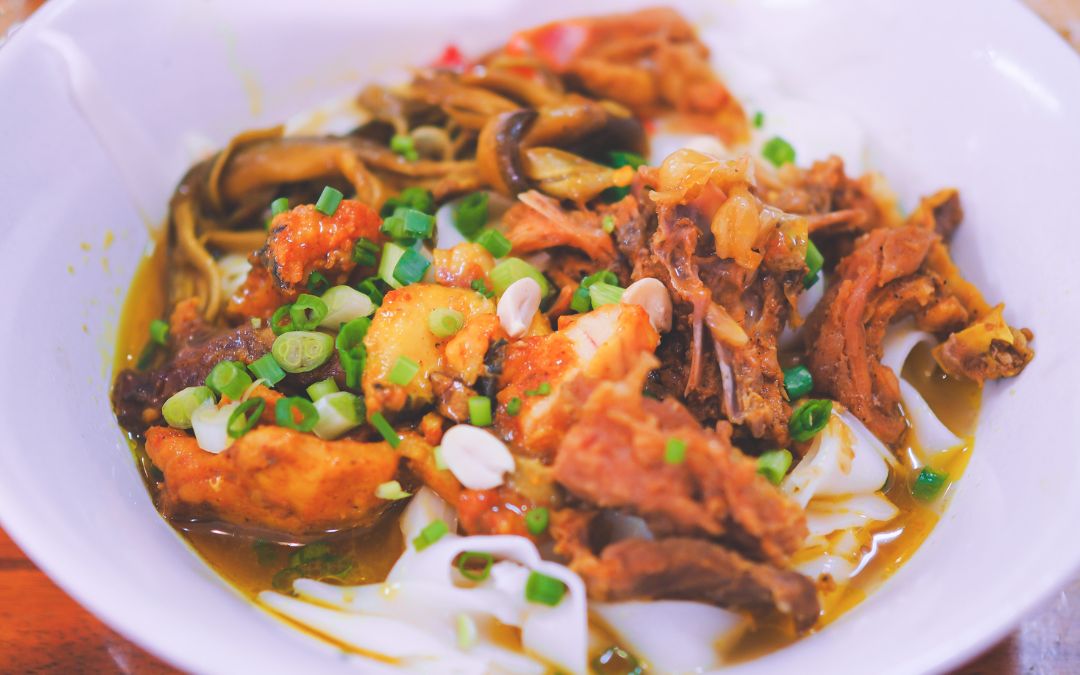
Mi Quang, the beloved noodle dish from Da Nang City
>> Read More: Top 15 Iconic Dishes You Must Try On Your Da Nang Food Tour
Southern Vietnam
Com Tam
- The best place to taste: Ho Chi Minh City
Com Tam, or broken rice, is a popular dish in Ho Chi Minh City. It is typically served with grilled pork, a fried egg, and various accompaniments such as pickled vegetables and fish sauce.
Hu Tieu
- The best place to taste: Ho Chi Minh City
Hu Tieu is a noodle soup that is popular in the southern region. The broth is made from pork bones and dried squid, giving it a sweet and savory flavor. The noodles can be served dry or in soup, with various toppings such as shrimp, pork, and quail eggs.
Banh Xeo
- The best place to taste: Mekong Delta
Banh Xeo is a crispy Vietnamese pancake made from rice flour, turmeric, and coconut milk. It is filled with shrimp, pork, and bean sprouts and is typically served with fresh herbs and a dipping sauce.
Ca Kho To
- The best place to taste: Mekong Delta
Ca Kho To is a traditional dish of the Mekong Delta. It is a caramelized fish stew made with catfish, cooked in a clay pot with fish sauce, sugar, and black pepper. The result is a rich and flavorful dish that is best enjoyed with steamed rice.
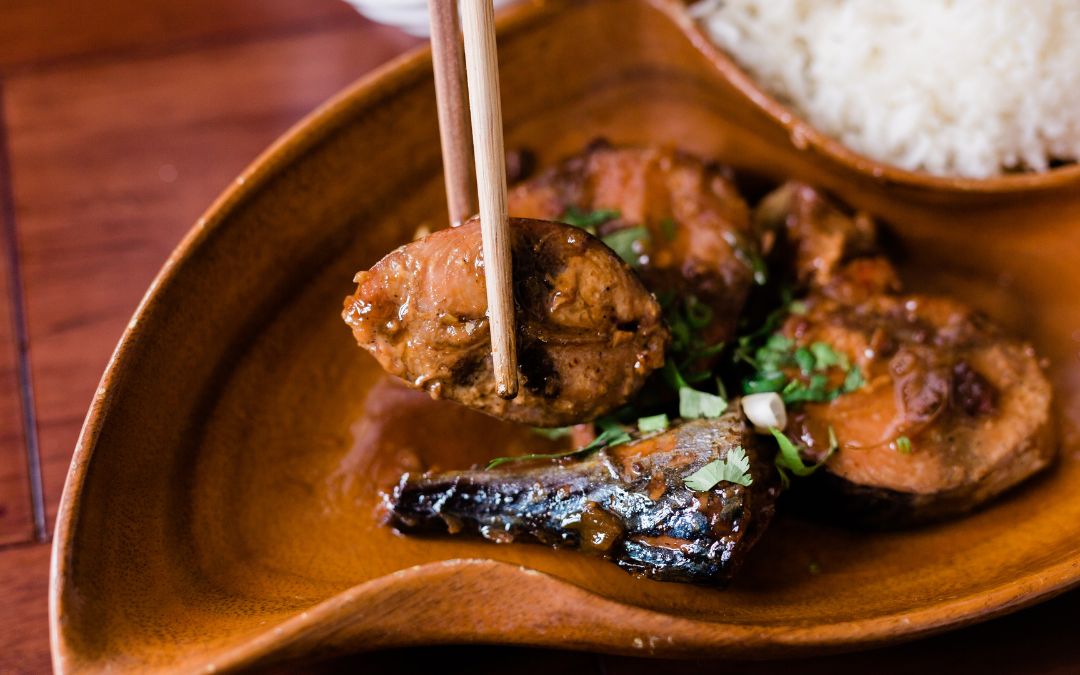
Ca Kho To with white rice
Recommended Vietnam Food Tour Itinerary
Experience the burgeoning popularity of Vietnamese cuisine on a culinary tour of Vietnam. Immerse yourself in the mouthwatering flavors during this 13-day journey and succumb to the nation’s timeless charm and delectable cuisine.
Day 1 – 5: Hanoi – Halong Bay
Arrive in Hanoi, the vibrant capital city of Vietnam. Explore Hanoi’s key attractions, including the Temple of Literature, One Pillar Pagoda, and the bustling Old Quarter. In the evening, embark on a foodie tour to sample the city’s exceptional street food, from the iconic pho (Vietnamese noodle soup) to delectable xiu mai (Vietnamese meatballs).
The next days, board a traditional junk boat and sail through the stunning landscapes of Halong Bay. Admire the remarkable limestone karsts that dot the emerald green waters as you savor the 5-star cuisine prepared by the onboard chefs. Disembark to explore the hidden islets and caves, discovering the region’s natural wonders.
Day 6 – 9: Hoi An – Hue
Fly to Da Nang and transfer to the historic town of Hoi An. Venture into the rural areas surrounding Hoi An to see traditional farming and fishing communities. Back in the town, explore the UNESCO-listed site, with its magnificent Japanese-covered bridge and vibrant markets. Indulge in the local cuisine, including cao lau (a signature Hoi An noodle dish) and banh mi (Vietnamese baguette sandwiches).
Continue your culinary journey to Hue, the former imperial capital. Experience a royal banquet with traditional court music, and visit the iconic landmarks of the city, such as the Forbidden Purple City and the Tomb of Minh Mang.
Day 10 – 13: Ho Chi Minh City – Mekong Delta
Fly to Ho Chi Minh City, the bustling economic hub of Vietnam. Explore the city’s famous sites, including the War Remnants Museum and the Notre Dame Cathedral. Embark on a Vespa food tour, navigating the city’s vibrant streets to discover the locals’ favorite street food stalls.
Venture out to the Mekong Delta, a lush region known for its winding waterways, floating markets, and abundant fruit orchards. Hop on a motorized boat and cruise through the narrow canals, stopping to taste the local delicacies and witness the daily life of the Delta’s residents.
This 13-day food tour of Vietnam promises an unforgettable culinary adventure, allowing you to savor the exceptional flavors of the country while immersing yourself in its timeless charm and rich cultural heritage.
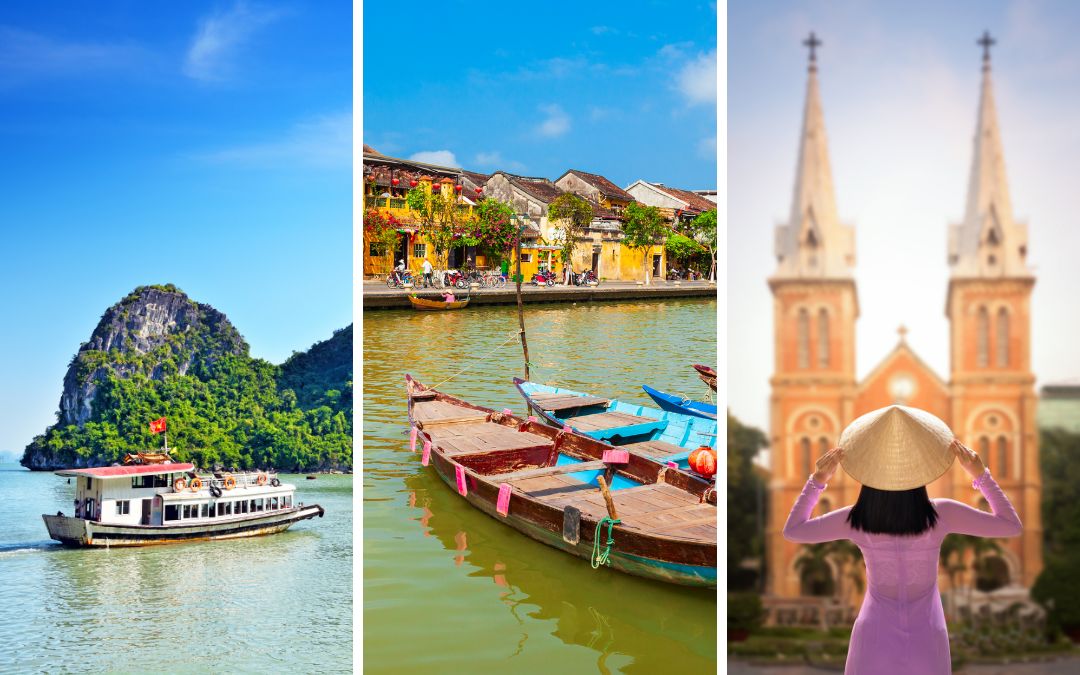
A flavory journey through Vietnam
>> Get More Details On This Customizd Tour: A Food Lover’s Tour of Vietnam
Useful Tips to Fully Enjoy Your Vietnam Food Tour
Etiquette Tips for Dining in Vietnam
Table Manners
When dining in Vietnam, it’s essential to observe local table manners to show respect for your hosts and fellow diners. Here are some key etiquette tips:
- Wait to be Seated: In many restaurants, you will be shown to your seat. Wait for the host or server to indicate where you should sit.
- Use Both Hands: When passing dishes or receiving food, use both hands as a sign of respect.
- Chopstick Etiquette: Avoid sticking chopsticks upright in a bowl of rice, as this resembles incense sticks used in funerals. Instead, place them on the chopstick rest or across your bowl when not in use.
- Sharing Food: It’s common to share dishes in Vietnam. Use the communal serving utensils provided, or if none are available, use the opposite end of your chopsticks to serve yourself.
Tipping Practices
Tipping is not a widespread practice in Vietnam, but it is appreciated in some settings, especially in tourist areas. A small tip of around 5-10% of the bill can be given in restaurants with table service. For street food vendors, rounding up the bill is a kind gesture.
Street Food Safety
Choosing Safe Street Food Vendors
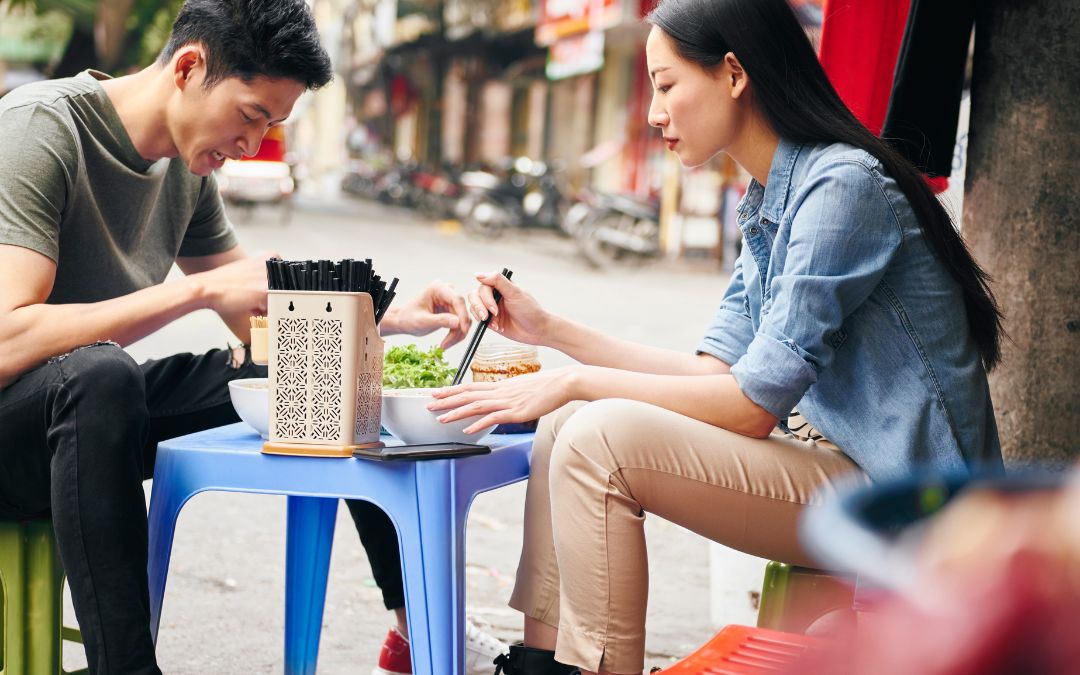
Street food is an integral part of the Vietnamese culinary experience
Here are some tips for selecting safe street food vendors:
- Look for Busy Stalls: High turnover means the food is likely fresh and hasn’t been sitting out for long.
- Observe Hygiene Practices: Choose vendors who handle food with clean utensils and wear gloves.
- Check for Cleanliness: The stall and surrounding area should be clean and free of pests.
Safe Eating Practices
To further minimize the risk of foodborne illness, follow these safe eating practices:
- Eat Cooked Food: Opt for dishes that are cooked thoroughly, as high heat kills harmful bacteria.
- Avoid Raw Produce: Unless you can peel it yourself, avoid raw fruits and vegetables that may have been washed in contaminated water.
- Stay Hydrated: Drink bottled or boiled water to stay hydrated and avoid waterborne illnesses.
Savor The Flavors and Explore The Culture of Vietnam
A Vietnam food tour is not just about satisfying your taste buds; it’s an invitation to immerse yourself in the vibrant culture and traditions that have shaped the country’s culinary landscape. From the bustling night markets of Hanoi to the serene riverside eateries of Hoi An, each bite and every encounter will leave you with a deeper appreciation for the richness of Vietnamese cuisine.
So, whether you’re a seasoned foodie or a curious traveler, let Asia Pioneer Travel be your dedicated guide. You can Craft Your Own Trip with our amazing travel designers and fully immerse yourself in the culinary wonders of this vibrant country.
Embark on a culinary adventure through Vietnam and allow your senses to be delighted by the country’s diverse and captivating flavors!
